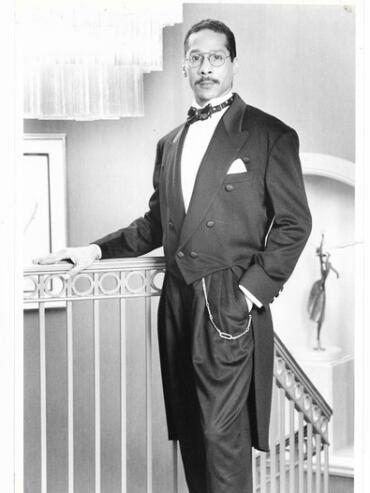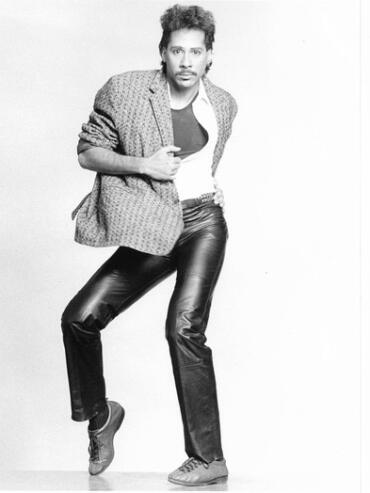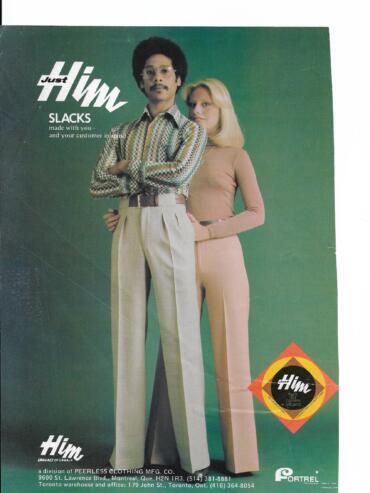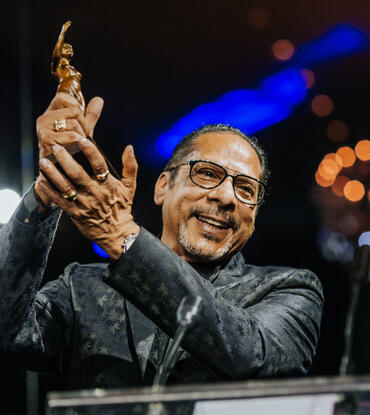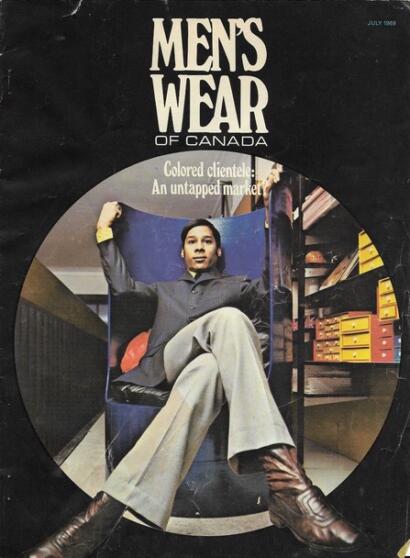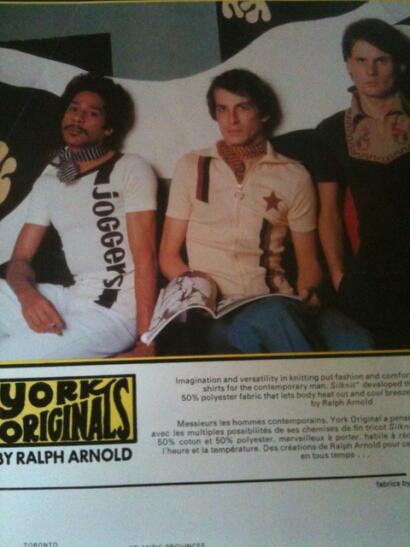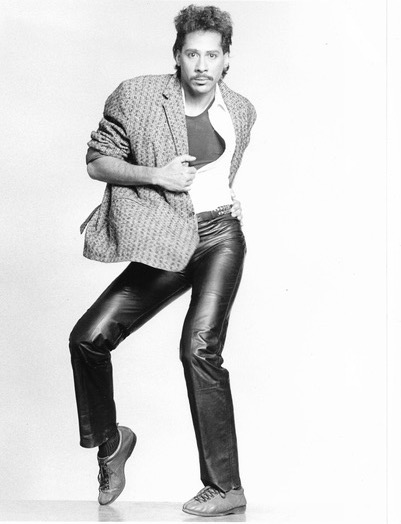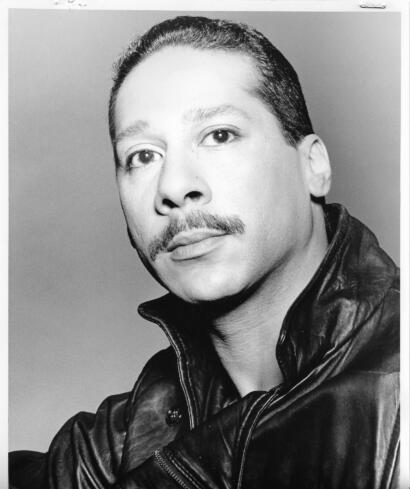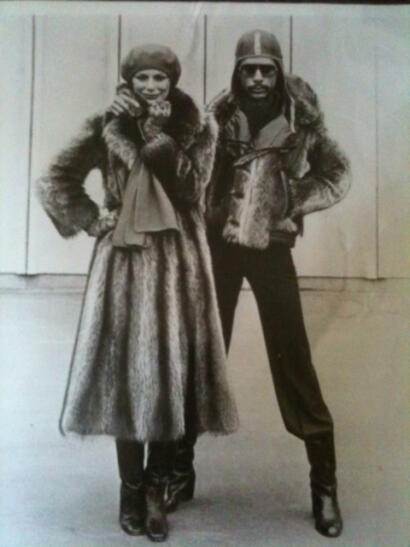June 2024
Month 20xx
Charmaine Gooden
Jacob Marion
Don Jordan, a pioneering figure in the Canadian fashion industry, began his journey in Montreal at the age of 15. His name resonates with a legacy that spans decades, starting with winning a dance contest. Little did he know, this triumph would catapult him into the limelight, earning him a coveted spot on a television dance show a year later.
In the 1960s, as one of the first top Black male models in Montreal, Jordan confronted the challenges of breaking racial barriers, and often stood alone as the sole representative of diversity in the Canadian fashion industry. Despite facing instances of racism, he navigated the industry with grace, leaving a lasting impact and establishing himself as a notable trailblazer.
Early Life and Career
Jordan’s roots can be traced to his father, a Black-American jazz musician and his European mother, who cultivated a diverse cultural upbringing. The family lived in Montreal’s Ville D’Anjou neighbourhood, and he attended Dunton High School. Raised between Montreal and New York, his childhood was a dance between many worlds.
Jordan’s career in dance commenced at the age of six, with tap routines inspired by his father who was also a tap dancer. His love for dance grew, leading him to explore various styles, from African dance to classical ballet. As a teenager, Jordan landed a spot on the television show Like Young, a music entertainment show geared towards youth, like American Bandstand and Soul Train. The show lasted six years, making him one of the few Black faces on screen in the 1960s.
This special section creates a photo next to a pull-quote
In the early stages of his career, industry members told Jordan he wouldn’t have access to the same jobs and opportunities as his white counterparts, because he’d be perceived as a novelty.
But Jordan responds: “I’ve filmed 50 or more commercials. So I broke the mould and proved everybody wrong, which I’m kind of proud of.”
Simultaneously, Jordan embarked on a modelling career with the Constance Brown agency, becoming a prominent figure in Montreal’s fashion scene. By 1969, he graced the cover of Men’s Wear of Canada as the first Black male model to be featured, a groundbreaking moment in an industry that had seen few Black models then.
After two years at Dawson College in Montreal, Jordan departed to dedicate himself to his true passions, dancing, acting and modelling. He credits much of his professional opportunities to the late Canadian fashion journalist, Iona Monahan, who consistently booked him for runways, magazines and newspapers.
role of race
In an era full of racial challenges, Jordan navigated the fashion industry with dignity, and his experiences speak to the hurdles many Black models faced. Jordan recalls in the early 1970s when he and a fellow Black female model were denied entry to a prestigious venue in Manhattan, despite both being booked to work as runway and photography models there the next day.
Growing up in a sheltered environment, Jordan’s awakening to the gravity of being one of the only Black faces on television occurred after filming his first episode of Like Young. It was a pivotal moment when the show’s producer said to him, “You’re going to be highly visible. Your every word, every action, every behaviour will reflect on you. You are representing all your race!” Jordan recalls. To this day, those words weigh on him.
In the early stages of his career, industry members told Jordan he wouldn’t have access to the same jobs and opportunities as his white counterparts, because he was perceived as a novelty. “I’ve filmed 50 or more commercials,” Jordan responds. “So I broke the mould and proved everybody wrong, which I’m kind of proud of.”
Despite numerous accomplishments in his career, Jordan reflects on a sense of isolation from his peers. Some models in the industry resented that he was securing much of the work available, with brands often refusing to hire more than one Black model.
Jordan also felt he had to remain quiet amongst his white peers. “I tried to adhere to a certain bunch of principles that were going to be accepted by my white counterparts,” he explains. “I think the reason for that is because white society categorizes and puts me in a certain box.”
Yet, despite being one of the few Black male models in Montreal during his early years, Jordan’s positive approach and professionalism spoke louder than the prejudices he encountered.
Influence and Legacy
Jordan’s impact on the Canadian fashion scene is unquestionable. From gracing runways and editorial spreads to being the first Black model on the cover of a menswear magazine, he paved the way for diversity in an industry that was beginning to recognize untapped potential.
Several decades later, acknowledgement for his outstanding contributions to, not only fashion but as an actor with over 80 film credits to his name, is finally coming to fruition. Jordan has been honoured with prestigious awards like The ACTRA Award of Excellence, the Jeraldyne Blunden Local Innovators Award from the International Association of Blacks in Dance, the Martin Luther King Jr. Achievement Award for significant contributions to African-Canadian artistic and cultural life and the 2010 Black History Award from the city of Montreal and the Round Table on Black History Month.
“Wow. Is the universe trying to tell me something? Because a lot of people don’t get any kind of awards until after they pass on,” he muses.
40 years ago, Jordan’s friendship with Janet Lazare began when she enrolled in his dance classes at Body Language, where he taught as her instructor. She recalls witnessing him emerge as an influential figure within Montreal’s Black community during the 1970s, known for his creativity, talent, humility and drive. One thing Lazare also notes was his style, “He was always a good dresser. To this day, he’s always well put together. He definitely has a great fashion sense.”
Until recently, Jordan didn’t fully grasp his role and influence as a pioneer for Black models in Canadian fashion. “The past few years, things are really beginning to sink in on what my life was like and some of the trials and tribulations that I went through,” he explains. Now, Jordan recognizes his role in bringing awareness to underrepresented models. He points out the irony in the caption of his Men’s Wear of Canada cover, reading “Coloured clientele: An untapped market,” which, in retrospect, highlights his influence in helping transform attitudes.
Despite being the only Black male model in Montreal during his early years, Jordan’s positive approach and professionalism spoke louder than the prejudices he encountered.
Cheryl Alleyne, Jordan’s longtime friend of 26 years, thinks highly of him and his impact on the fashion world. “When you are a visible minority and not equally valued, being the first to walk through that door comes with a lot of responsibility,” she comments.
Alleyne, who first met Jordan when she was working at the ACTRA Montreal office, of which Jordan was a union member and the first Black president from 2007 to 2016, adds, “[His] character as a human being is a pretty close to perfect example of humility, kindness, generosity, and dedication
In terms of the industry today, Jordan maintains the belief there is still a considerable distance to go. He senses that in many cases, the industry might claim to be open to diversity as a superficial gesture to appear inclusive, rather than genuinely embracing it for the right reasons.
Jordan’s fashion journey is a narrative of resilience and courage, serving as a testament to the enduring spirit necessary to propel change. From on stage to the glossy pages of magazines, his story reflects the evolution of Canadian fashion amidst an industry that continues to grapple with questions of diversity.
About the authors:
Over the years Prof. Gooden has built a multi-media career as an editor, writer, presenter, public relations consultant and special event manager, spokesperson, host, and educator. She...
Read MoreOver the years Prof. Gooden has built a multi-media career as an editor, writer, presenter, public relations consultant and special event manager, spokesperson, host, and educator. She...
Read MoreAbout the author:
Over the years Prof. Gooden has built a multi-media career as an editor, writer, presenter, public relations consultant and special event manager, spokesperson, host, and educator. She...
Read More


